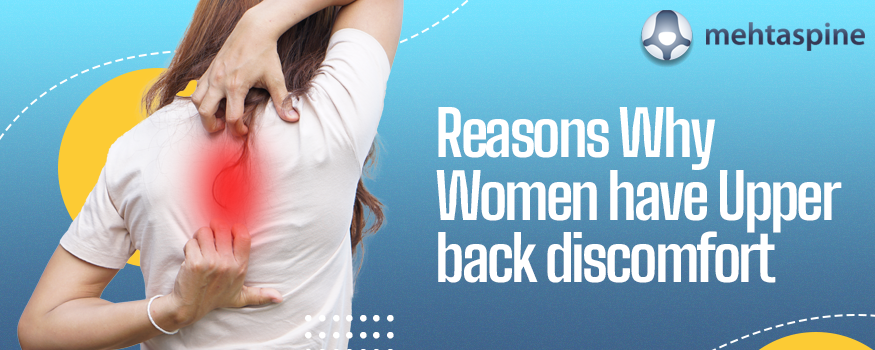Reasons Why Women have Upperback discomfort
Feeling a constant, sharp pain in the upper back or an ache that won’t go away between your shoulder blades? You’re not alone. Many women experience upper back discomfort, which can range from mild soreness to severe pain that disrupts daily life.
But what exactly is causing this discomfort, and how can it be addressed effectively? Let’s explore the common causes and treatments with insights from adult & children spine specialist in UK Mr Jwalant Mehta.
Common Causes of Upper Back Discomfort in Women
- Poor Posture:The silent agitator In today’s digital age, poor posture is one of the most prevalent reasons behind upper back pain. Slouching over a desk, leaning forward while on the phone, or hunching over while driving can cause significant muscle strain, leading to chronic back pain in the upper back. Over time, this consistent strain can result in muscle tightness and inflammation, which intensifies the discomfort.
- Hormonal Changes and Menopause: Menopause brings about numerous hormonal shifts that can affect bone density and muscle strength. A reduction in estrogen levels during menopause weakens bones, making them more prone to fractures and causingback pain in the upper back between shoulder blades. Moreover, these hormonal changes can cause ligaments to loosen, which may increase the risk of injury or strain.
- Muscle Strain and Injury:Everyday activities such as lifting heavy objects, sudden movements, or even an awkward sleeping position can cause muscle strains. These strains are a frequent cause of sharp pain in the upper back. Without proper care, these injuries can lead to chronic pain or more severe conditions.
- Underlying Medical Conditions:Conditions like scoliosis, herniated discs, or osteoporosis can significantly contribute to upper back discomfort. For example, scoliosis causes an abnormal curvature of the spine, leading to uneven stress on muscles, ligaments, and nerves, resulting in persistent pain.
Symptoms to Watch Out For:
You might be dealing with back pain in the upper back if you experience:
- A dull ache or sharp pain in the upper back and shoulder blades
- Stiffness or tension that makes it hard to move freely
- Pain that disrupts your daily routine and limits your activities
- Discomfort that radiates to your neck or arms
Diagnosing the Cause of Upper Back Pain
Getting to the root of your discomfort is critical. A thorough physical examination by a healthcare professional, often followed by imaging studies such as X-rays, MRIs, or CT scans, can help pinpoint the exact cause of your pain. Sometimes, nerve conduction studies are recommended to determine if there’s any nerve compression or damage.
Treatment Options to Alleviate Upper Back Discomfort
- Physical Therapy: Engage in targeted exercises and stretches designed to strengthen your back muscles and improve your posture.
- Medication:Over-the-counter pain relievers and anti-inflammatory drugs can help ease your pain and reduce inflammation.
- Lifestyle Changes:Adjusting your workstation ergonomically and incorporating regular exercise can significantly reduce future pain.
- Heat and Cold Therapy:Applying heat or ice to the affected area can help alleviate pain and ease muscle tension.
Upper back pain, though joint, should never be dismissed. Left untreated, what starts as a mild discomfort can escalate into a chronic condition that significantly impacts your quality of life. Whether it’s due to poor posture, hormonal changes, or an underlying medical issue, addressing the root cause early on is crucial. Remember, timely intervention can prevent more severe consequences down the line.
If you’re experiencing persistent pain in your upper back, don’t wait for it to worsen. Consulting with an expert like Jwalant Mehta, a leading spine specialist in the UK, can make all the difference. With his extensive experience in treating spine-related conditions, Mr. Mehta is dedicated to helping you find the relief you deserve. Please schedule your appointment here.


